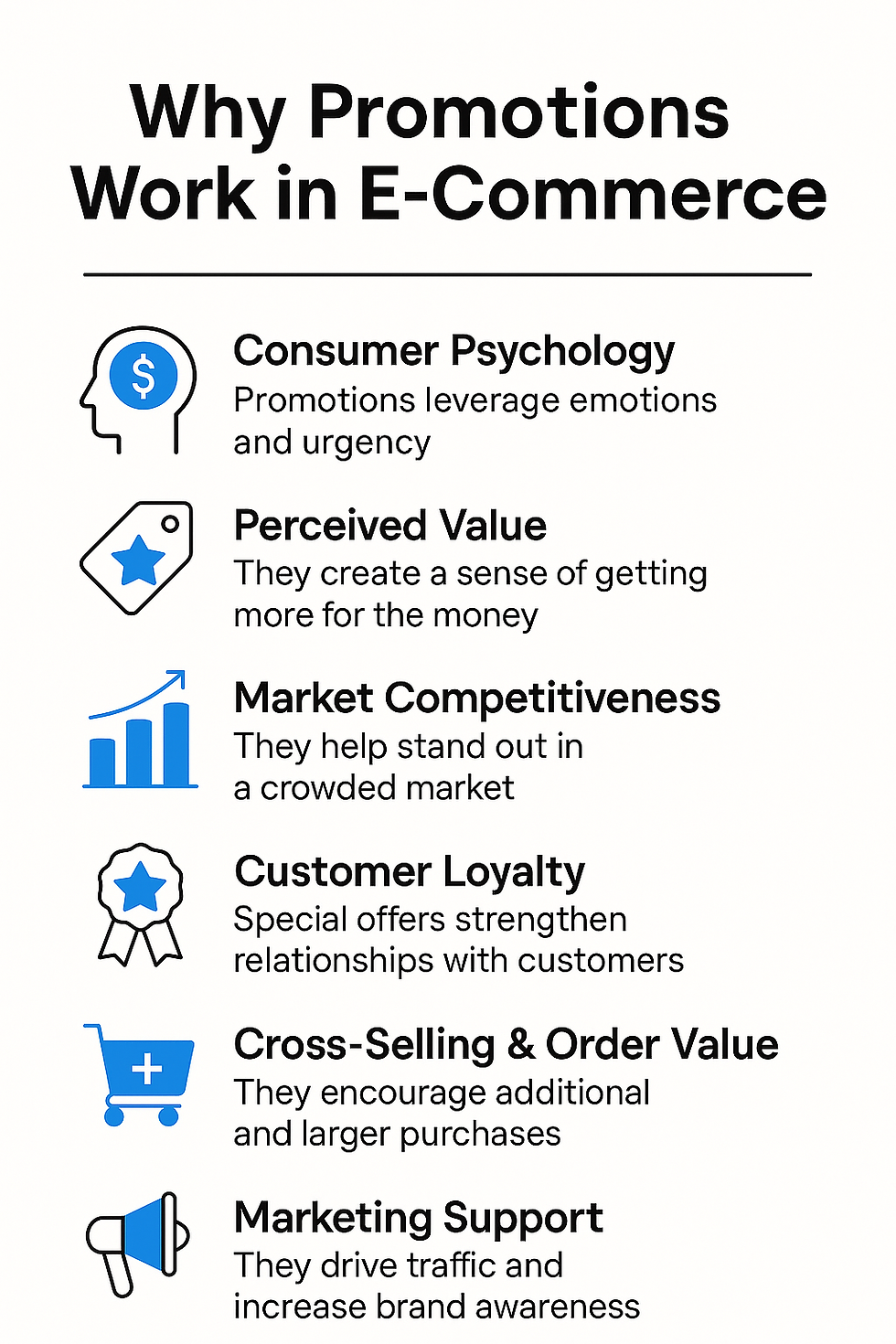Promotion Is Not Just a Discount – How to Build Price Advantage Without Cutting Prices
- Admin
- 15 wrz
- 3 minut(y) czytania
When we think about promotions, the first thing that usually comes to mind is a price reduction. It’s intuitive – easy to communicate and quick to implement. However, from the seller’s perspective, it is also the most expensive solution because it reduces margins and makes it harder to return to higher prices later. What’s more, discounts are not always the most effective purchase trigger.
In reality, shoppers often make decisions based on emotions and their perception of value, rather than pure logic. Sales psychology shows that the way customers feel about an offer can be more important than the actual amount of money they spend. This is why effective promotions often rely on mechanisms that go far beyond simple price cuts.

Why Don’t Consumers Always Choose the Cheapest Option?
Economists describe this as the phenomenon of consumer irrationality – people buy with both their minds and their hearts. This is why free shipping often feels more attractive than a discount of the same value. Similarly, the “free gift effect” – as demonstrated in Dan Ariely’s behavioral studies – shows that even a small bonus (like a chocolate bar or a pen) can dramatically increase the appeal of an offer.
Customers don’t just compare numbers. They build a mental story: “I’m getting something extra, so this is a better deal.” And that story is what drives the decision.
Alternatives to Simple Price Reductions - Build Price Advantage Without Cutting Prices
Instead of lowering prices, sellers can use a variety of strategies to create a sense of added value:
Free gifts and add-ons – headphones with a phone, a laptop bag with a computer, or free samples in cosmetics and food.
Free shipping – especially powerful in e-commerce, where extra charges create a psychological barrier.
Bundles and package deals – a TV with a soundbar, or a skincare set. Customers perceive these as savings, even if they spend more overall.
Discount codes – more impactful than open price cuts because they feel exclusive.
Cashback – extending the emotional benefit of purchase when money is returned later.
Best price guarantee – not always used, but it builds trust and security.
Example: A Phone With a Free Gift vs. a Cheaper Phone
Imagine a consumer comparing two offers:
Store A: a phone for $1,000
Store B: a phone for $1,050 but with free headphones included
On paper, Store A seems like the clear winner. Yet in practice, many shoppers will pick Store B because of the perceived added value.
Two main factors drive this choice:
The perceived value of the gift – even if the store pays $20 for the headphones, the customer may value them at $50 or more.
The sense of opportunity – even customers who don’t need headphones may buy the bundle simply because they don’t want to “miss out on a deal.”
This illustrates how emotions and perception of value often outweigh pure financial calculation.
Why Promotions Must Have a Clear Goal
Every promotion should serve a specific purpose. Of course, increasing sales is the ultimate objective, but promotions can also work toward other strategic goals:
Clearing inventory – especially in fast-moving industries like fashion.
Increasing basket value – e.g., “free shipping for orders over $50.”
Acquiring new customers – aggressive discounts for first-time buyers.
Improving profitability – pushing high-margin products by pairing them with popular items.
Defining clear goals also makes it easier to set the right KPIs. The metrics you use to measure new customer acquisition will differ from those used to evaluate stock clearance campaigns.
Promotions as Part of Pricing Strategy
One of the biggest mistakes businesses make is treating promotions as short-term fixes. In reality, promotions should be part of a broader pricing policy, based on data and an understanding of price elasticity.
That’s why it’s essential to:
track promotion history,
analyze their impact on sales and margins,
learn which mechanisms resonate with different customer segments.
When approached strategically, promotions stop being random expenses and become tools for building long-term competitive advantage.
Conclusion
Price cuts are simple, but not always profitable (You should always try build price advantage without cutting prices). In many cases, building the perception of value through free gifts, bundles, free shipping, or cashback is far more effective. Customers buy with emotions, and their perception of an offer often matters more than the math.
Promotions should always align with clear business goals and be monitored for effectiveness. Only then do they transform from a cost into an investment that strengthens both sales and brand loyalty.





Komentarze